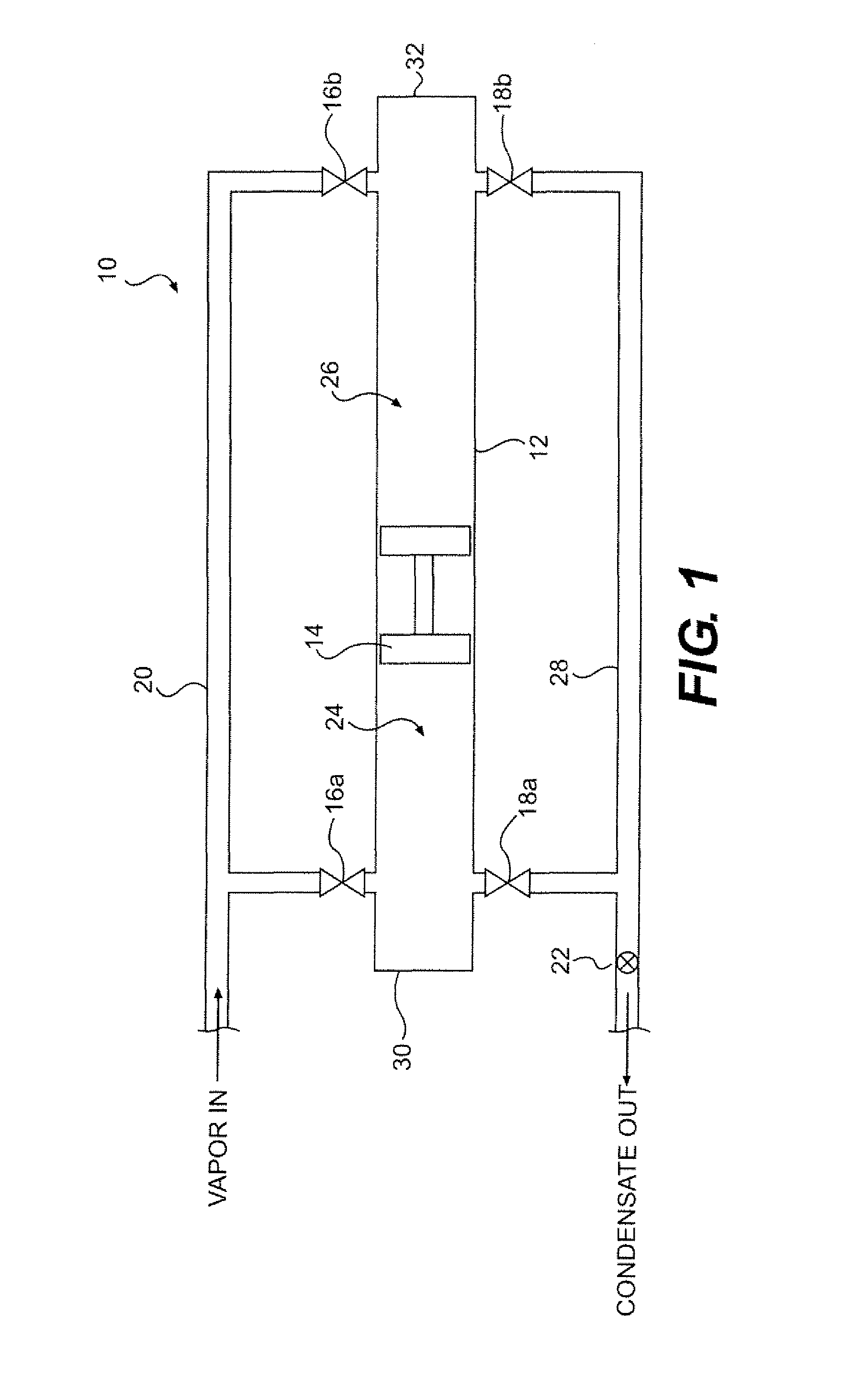Open loop heat pipe radiator having a free-piston for wiping condensed working fluid
a working fluid and open-loop technology, applied in the field of cooling systems, can solve the problems of high cost of lifting payloads to orbit necessitate thermal management systems, production of several times as much unusable power as is converted to electricity, and the limited size of solar cells, etc., to achieve the effect of low mass-to-power ratio, large size and high mass
- Summary
- Abstract
- Description
- Claims
- Application Information
AI Technical Summary
Benefits of technology
Problems solved by technology
Method used
Image
Examples
Embodiment Construction
[0019]The present invention now will be described more fully hereinafter with reference to the accompanying drawings, in which preferred embodiments of the invention are shown. This invention may, however, be embodied in many different forms and should not be construed as limited to the embodiments set forth herein; rather, these embodiments are provided so that this disclosure will be thorough and complete, and will fully convey the scope of the invention to those skilled in the art. Like numbers refer to like elements throughout.
[0020]Referring now to FIG. 1, a schematic block diagram of a heat pipe radiator is illustrated, in accordance with one embodiment of the present invention. The heat pipe radiator 10 comprises a radiator tube 12, a free-piston 14, a first inlet valve 16a, a second inlet valve 16b, a first drain valve 18a, a second drain valve 18b, and a pump 22. The radiator tube 12 typically has a straight cylindrical shape, although other shapes may be possible. The radi...
PUM
 Login to View More
Login to View More Abstract
Description
Claims
Application Information
 Login to View More
Login to View More - R&D
- Intellectual Property
- Life Sciences
- Materials
- Tech Scout
- Unparalleled Data Quality
- Higher Quality Content
- 60% Fewer Hallucinations
Browse by: Latest US Patents, China's latest patents, Technical Efficacy Thesaurus, Application Domain, Technology Topic, Popular Technical Reports.
© 2025 PatSnap. All rights reserved.Legal|Privacy policy|Modern Slavery Act Transparency Statement|Sitemap|About US| Contact US: help@patsnap.com



